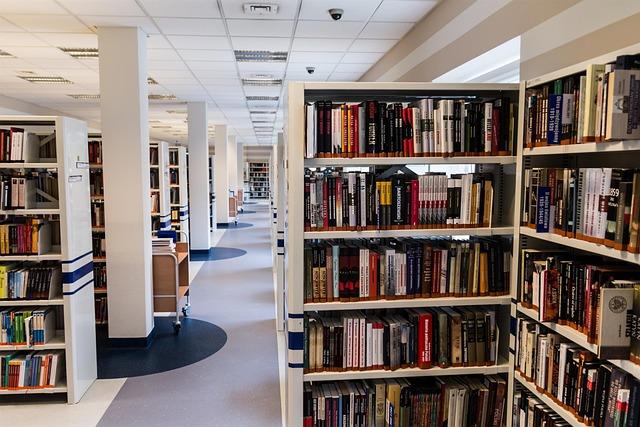In an era defined by rapid technological advancement, artificial intelligence (AI) is transforming the educational landscape, empowering students to harness personalized learning experiences and cultivate their independence. From adaptive learning platforms to automated tutoring systems, AI is facilitating individualized pathways that allow learners to progress at their own pace and explore subjects in depth. However, this newfound autonomy comes with significant risks, raising concerns about the potential for social isolation among students. As young adults become increasingly reliant on technology for academic support, experts warn that the very tools designed to enhance learning may inadvertently undermine crucial interpersonal skills and networking opportunities vital for future careers. In this article, we examine the dual-edged nature of AI’s influence on education, weighing the benefits of self-directed learning against the ethical implications of fostering a generation that may struggle with collaboration and communication in the workforce.
Harnessing AI for Greater Student Independence While Navigating Social Isolation
The integration of AI tools in educational settings is allowing students to tap into their independence like never before. Technologies such as personalized learning platforms and intelligent tutoring systems are enabling learners to take charge of their educational journeys. Students can access resources tailored to their learning pace and style, which fosters a sense of autonomy that was previously unattainable. However, this technological empowerment comes with a caveat: a growing tendency for social isolation. As students become increasingly reliant on screens for their learning, they may inadvertently neglect face-to-face interactions that are crucial for developing interpersonal skills and networking opportunities.
This isolation poses serious implications for career readiness. Employers often seek individuals who can collaborate effectively and communicate openly-a skill set that is honed through personal interactions. Current data reflects this shift in social dynamics, illustrating a potential disconnect that could hinder future career prospects. Consider the following table showcasing a comparison between traditional and AI-supported learning environments regarding social engagement and skill development:
| Learning Environment | Social Engagement | Skill Development |
|---|---|---|
| Traditional Classroom | High – Frequent interaction with peers and instructors | Encourages collaboration and teamwork |
| AI-Supported Learning | Low – Limited face-to-face communication | Emphasizes individual achievement over group dynamics |
As the educational landscape evolves, it is essential to strike a balance. By adopting a hybrid model that incorporates AI while emphasizing the importance of social interaction, educational institutions can promote independence without sacrificing the social skills that are vital for professional success.
Balancing Technology and Human Interaction in Education for Career Readiness
The rise of artificial intelligence in educational environments has indeed propelled students toward greater independence, yet it also carries a hidden cost: the potential erosion of vital interpersonal skills. As students turn increasingly to AI tools for research, study assistance, and even social interactions, the nuances of human communication risk being neglected. This trend may breed a generation of graduates proficient in technology but lacking the essential soft skills that are often pivotal for career advancement, such as teamwork, empathy, and conflict resolution. Therefore, it is imperative for educational institutions to foster a balanced approach by integrating technology while also encouraging collaborative projects and face-to-face interactions.
To effectively bridge this gap, schools and universities must adopt strategies that emphasize human connections alongside technological integration. This could involve:
- Implementing group assignments that require collaboration and critical thinking.
- Hosting workshops focused on communication skills and emotional intelligence.
- Encouraging mentorship programs where students interact with industry professionals.
Moreover, career readiness curricula should include scenarios that simulate real-world challenges, demanding students to engage and negotiate as they would in a professional setting. By focusing on these aspects, educational institutions can prepare students not only to thrive in a technology-driven job market but also to excel in the art of human interaction.
Strategies to Mitigate Isolation Amidst AI-Assisted Learning Environments
In the era of AI-assisted learning, fostering a supportive and interactive environment has become crucial to combatting the feelings of isolation that can accompany unprecedented independence. Educational institutions can implement virtual study groups where students collaborate on projects using AI tools. This interactive format not only promotes social engagement but also allows students to leverage diverse perspectives to enhance their learning. Additional strategies include providing mentorship programs that connect students with experienced professionals in their fields, fostering vital connections that can be beneficial for career growth.
Moreover, integrating wellness initiatives into the AI learning curriculum is essential for psychological well-being. Institutions can organize regular networking events that encourage face-to-face interactions, helping students develop essential soft skills. Incorporating peer feedback sessions in AI-driven courses allows students to share ideas and challenges openly, creating a sense of community. The following table summarizes effective strategies to create a more interconnected learning environment:
| Strategy | Description |
|---|---|
| Virtual Study Groups | Foster collaboration through AI tools in a communal setting. |
| Mentorship Programs | Connect students with industry professionals for guidance. |
| Networking Events | Encourage personal interactions to build relationships. |
| Peer Feedback Sessions | Facilitate open communication and collective problem-solving. |
To Wrap It Up
As we navigate the evolving landscape of education, the integration of artificial intelligence tools presents a dual-edged sword. On one hand, these technologies empower students to take charge of their learning, fostering independence and enabling personalized educational experiences. On the other, the potential for increased isolation looms large, raising critical concerns about the social skills and collaborative experiences necessary for success in the ever-competitive job market.
As institutions and educators strive to strike the right balance, it is essential that they not only embrace AI’s capabilities but also actively work to mitigate its isolating effects. Building opportunities for collaboration, social interaction, and teamwork into AI-enhanced learning environments will be crucial in preparing students not only as independent thinkers but also as effective communicators and collaborators.
As the dialogue around the role of AI in education continues, stakeholders must remain vigilant in ensuring that the tools designed to enhance learning do not inadvertently hinder the development of the interpersonal skills that are vital in the workplace. The challenge lies in fostering a future where technology and human connection coexist, empowering students to thrive both academically and professionally. Ultimately, the goal should be to cultivate a generation of learners who are not only informed and capable but also socially adept and ready to tackle the complexities of the modern workforce.









